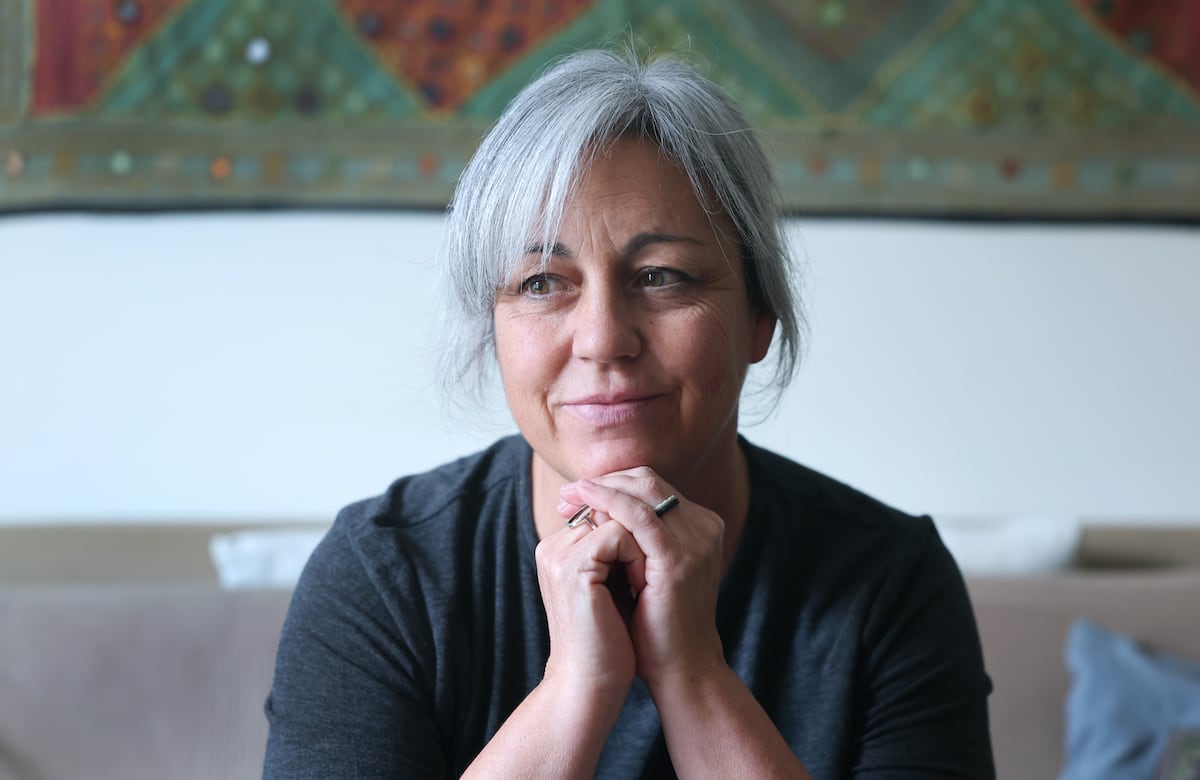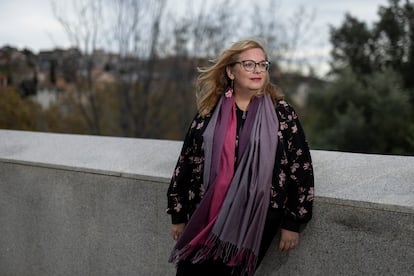Moving through the world without smell: “I wish I could smell babies, wet grass or gasoline” | Health and Wellness

There are three scents that Silvia Angera Roldan (Barcelona, 46) would like to smell: the scent of babies, wet grass and gasoline. The woman had anosmia since birth, meaning she could never smell. Nothing. “I think I realized I had no sense of smell at about 10 years old,” he says. “It was really funny when my family and I went into town and passed by a farm. “Everyone complained about the unpleasant smell of manure, but I didn’t feel it, I was immune.”
As a child, Angera thought that the smell of things dissipated, like the taste of chewing gum, if you chew it for a while, and that she never had time to smell it. So he invented methods to try to solve this problem. “When I was little, I remember someone once told me that dogs have a very strong sense of smell, so I noticed that their noses were always wet, and I wet my nose with saliva, thinking it would smell better. It didn’t work,” he recalls. Angera is not alone. The numbers are opaque, but it is estimated that between 3% and 10% of the world’s population suffers from some form of smell disorder.
Anosmia occurs due to a disconnection of the canal that connects the nose to the brain. Jesús Porta Etessam, president of the Spanish Society of Neurology, explains that humans have a brain structure that is connected to a series of nerves in the highest part of the nose. These nerves are connected to decoders that convert odorants into electrical stimuli that are transmitted directly to neurons. “We actually smell in the brain,” says the expert. This connection can be disrupted for a variety of reasons and is usually a symptom of a larger pathology. If it is not congenital, the most common causes of loss of smell are strokes or injuries, viral diseases, neurological pathologies (such as Parkinson’s or Alzheimer’s disease), smoking, or the abuse of certain drugs such as cocaine.
Anosmia can also appear for unexplained reasons. The case of Carolina Ortega Criado (Madrid, 50 years old) is one of these rare cases. 20 years ago, a woman lost her sense of smell day after day. “When this happened, I consulted three specialists, and one of them told me: “Your sense of smell has deteriorated because you used it so much.” Perhaps he was right,” he explains. In addition to being a member of the Spanish Anosmia Association, Ortega is involved in the restoration of cultural property and specializes in rescuing books. “This trade indiscriminately used very strong solvents such as chloroform, alcohol and acetone, which could damage my system,” he says. The loss of smell coincided with the birth of her first child: “I never knew what my children smelled like, and it’s difficult.”
Smell has always been a sense forgotten by science and underestimated by those who have never lost it. Karen Vazquez Pinochet, an otolaryngologist responsible for consultations on smell disorders at HM hospitals, assures that the absence of smell “significantly changes the quality of life of patients.” Anosmia is associated with decreased life expectancy, nutrition, and even mental health problems. “People with smell disorders are more likely to have certain accidents or be exposed to substances that may be harmful,” says the specialist.
As for Ortega, her children have rescued her from dangerous circumstances on more than one occasion. “I have had several accidents at home due to this problem. “I had pots on fire, and the situation never escalated because the children warned me that the house smelled like something was burning,” he recalls. For Angera, the “greatest drama” lies in personal hygiene. “This is what I care about most. It seems stupid, but when I take a shower and forget to put on deodorant, I have a hard time because I think I smell,” she says. For this reason, women tend to rely on others. “I’m not ashamed, I ask friends or relatives to smell me, and that’s it,” he clarifies.

Little research, few solutions
There is no reliable or universal solution to this problem. During the Covid-19 pandemic, as loss of smell became common among sick people, anosmia came to the fore and more resources were devoted to finding a cure. Dolores de la Cruz (Toledo, 71), a retired teacher, is one of those people who join the statistics of those who have become anosmic after being re-infected with the virus. “One morning I was drinking coffee and it tasted like water. “That’s when I realized something was wrong,” he says.
A month and a half after recovering from Covid, his sense of smell had not returned and his sense of taste had worsened. Then the decline began. “It affected me because I am a person who really loves to eat, cook and smell. Since then I’ve become a little more apathetic. Psychologically, this is a difficult feeling,” says the woman.
Despite the rise in cases like De la Cruz’s, Vasquez says that “the sense of smell has been studied significantly less than the rest of the senses in the human body.” And he adds that “the lack of research also means doctors have fewer tools to address the problem.”
If there are glasses for low vision, and specialized hearing aids for low vision, then anosmia does not have its own odor amplification system. “It’s very difficult to develop a device to treat it,” Porta says. He adds: “We could try to make an instrument, but it would be so big it wouldn’t fit in the nose.”
However, there is a method known as olfactory rehabilitation or re-education, a protocol developed by German researcher Thomas Hummel in the 2000s. For at least 12 weeks, the patient should sit and smell four to six odors captured by the essences. inside small bottles twice a day for five minutes. “For rehabilitation to be successful, a person must focus on the smells that he perceives at this moment. This helps the olfactory cells in the deep part of the nose to be stimulated and repaired,” says Vasquez. This is not an easy or quick treatment, and it is not even certain that it will work in all cases. “It’s like learning to walk again: if a person does it without frustration, with persistence and patience, after a few months one can notice improvement,” says the doctor.

The fact that this is not a sure-fire treatment is due to the fact that the human sense of smell is extremely complex. There are ten categories of basic odors: fruity, citrus, floral, minty, sweet, smoky (this includes everything from cheese to burnt cable or smoke), wood, synthetic chemicals, rancidity, and rot. But within each of these categories there are hundreds of possible nuances and mixtures.
Being such an intricate system, it easily wears out over the years. Vasquez explains: “Just as the rest of the body deteriorates with age, the olfactory cells in the nose are also lost. “Older people tend to have a fairly high incidence of anosmia.” Between 20% and 30% of people over 65 years of age experience loss of smell. This percentage rises to 75% among people over 80 years of age.
Not only is there a complete loss of meaning, you may also be suffering from some other perceptual disorder. There are, for example, cacosmia, in which a pleasant smell is perceived as unpleasant; parosmia, that is, a distorted sense of smell; and phantosmia, when a person notices a smell that is not actually there.
“It’s interesting: smell is one of the oldest senses that humans have, and despite this, many aspects of how it works remain to be discovered,” says Porta.
